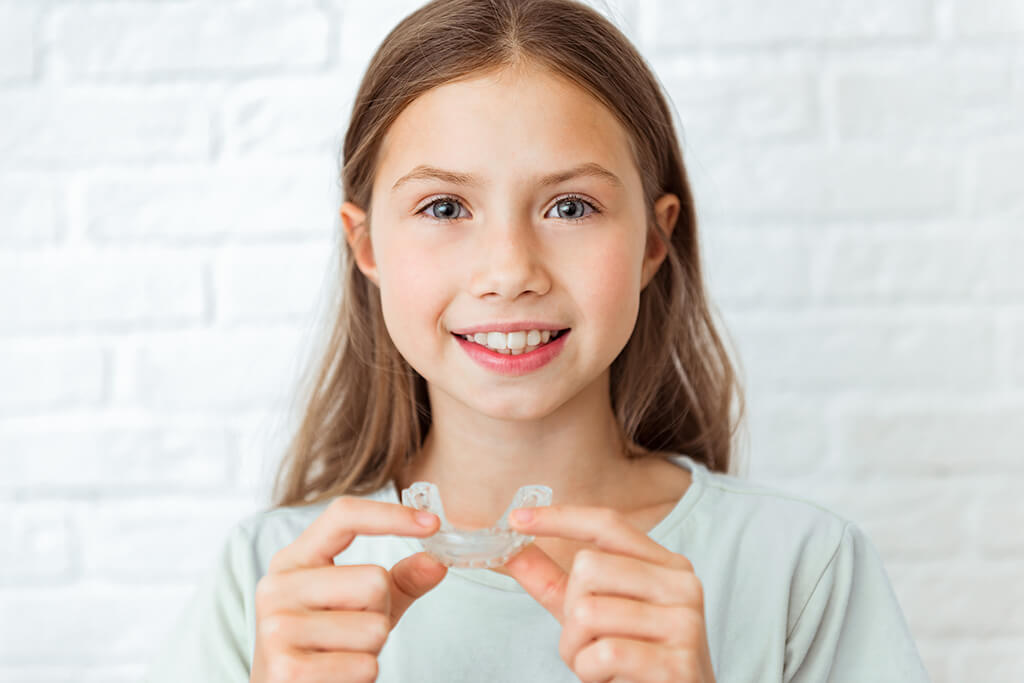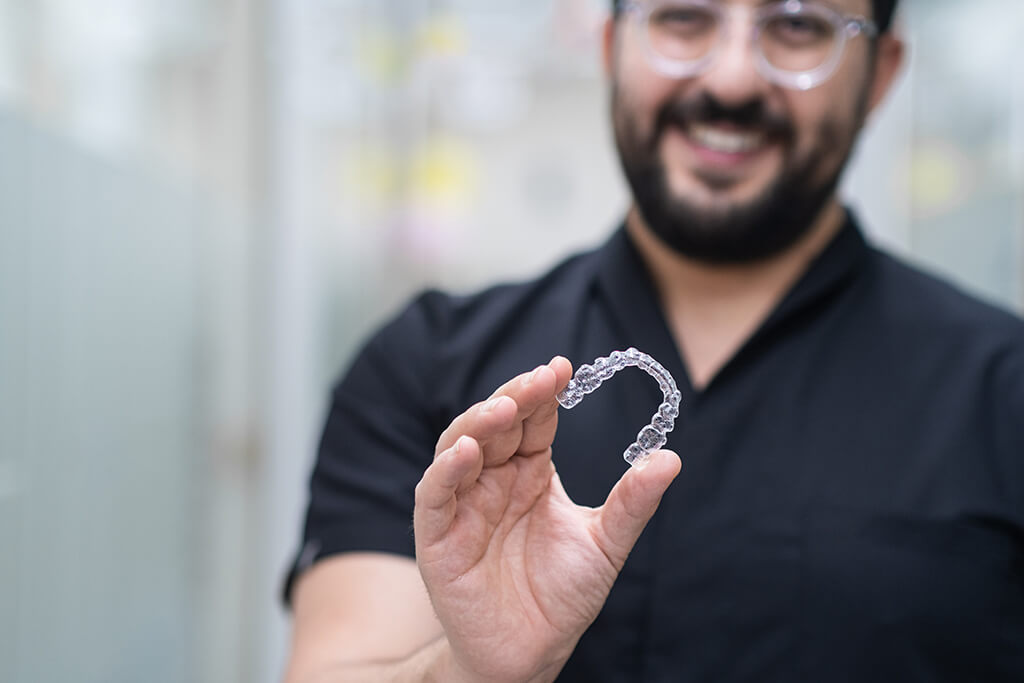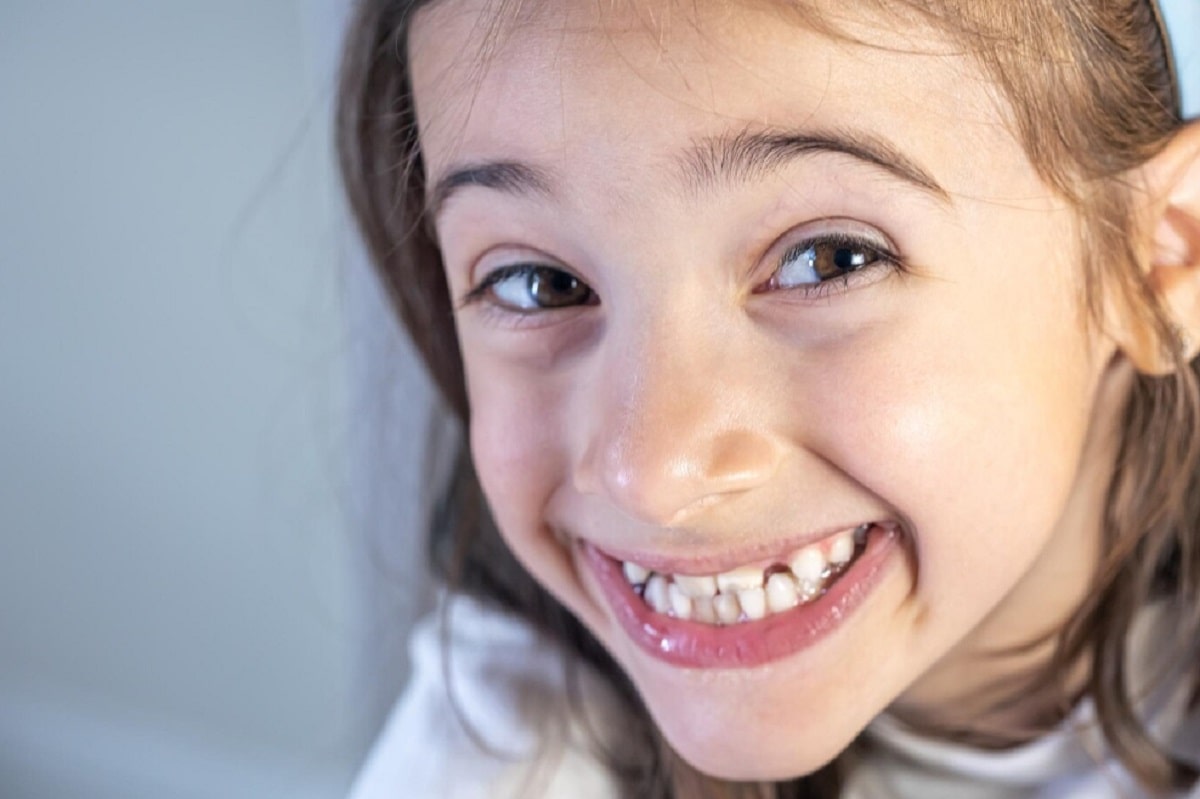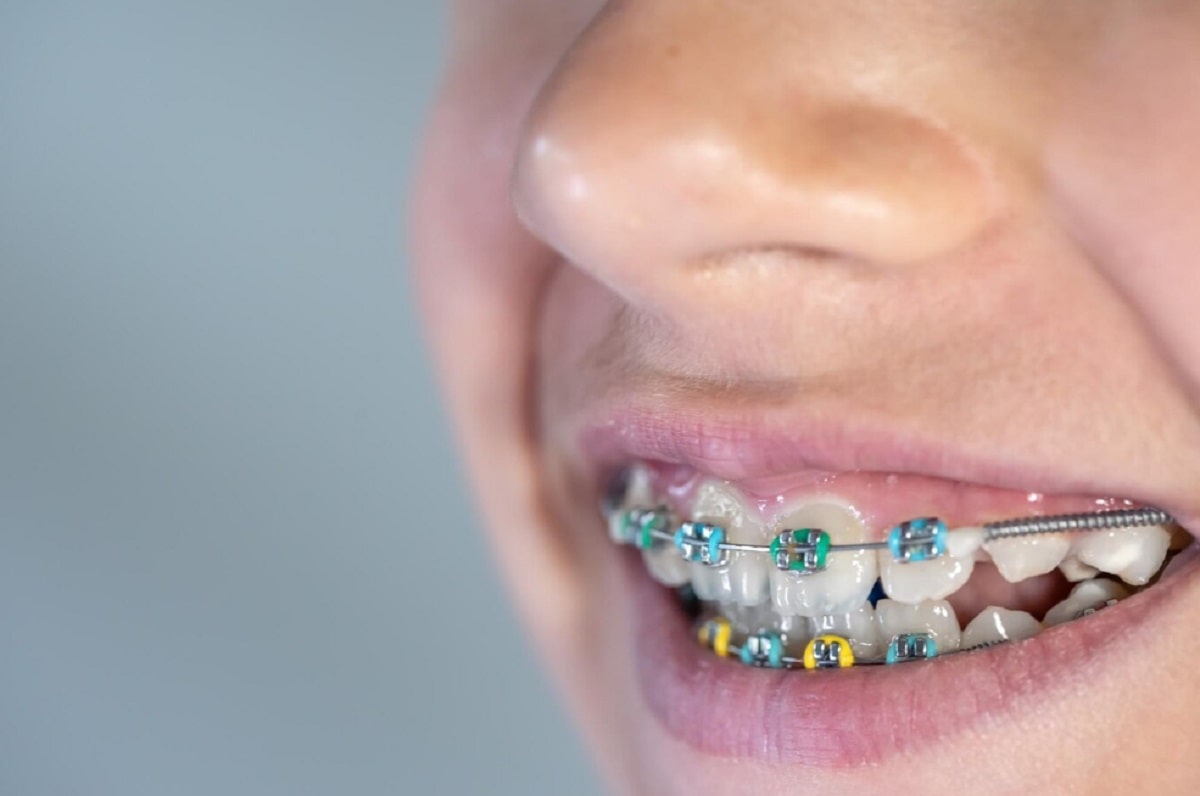Child orthodontic treatments are processes planned to start at an early age. In line with these processes, the child is prevented from experiencing advanced dental problems in adulthood. The orthodontic treatments mentioned are not limited to teeth only. Treatments can also be performed on the jaw and other elements for oral health.
Dr. Yasin Akgül carries out applications with different methods in the field of child orthodontics. Especially oral anomalies that occur as a result of situations such as bottle use and thumb sucking at an early age are eliminated. You can also apply to the clinic for child orthodontic treatment for jaw and tooth crookedness or misalignment .
What is Pediatric Orthodontics?
In short, child orthodontic treatment is an aesthetic treatment performed to eliminate problems in the mouth, teeth and jaw. The aim of this treatment is to achieve an aesthetic appearance as well as a healthy structure. Especially when it comes to orthodontics, braces or transparent plates will come to mind. When all these orthodontic treatments are applied to children, it is seen that they are called ‘child orthodontics’.
Dental problems begin to show themselves at an early age. Since there is also a crooked jaw, symptoms can be noticed early. As a result of situations such as teeth grinding, jaw noises and pain, crooked appearance of the teeth, child orthodontic treatment is started. Starting at an early age will also prevent problems that will be seen in adulthood.
Who Can Get Pediatric Orthodontic Treatment?
Dental treatments have methods that are applied regardless of gender. Since it is a child orthodontics issue, there is an age limitation rather than gender. On average, orthodontics can be performed on everyone from the age of 6-7, especially 11-12. There are reasons why it is not preferred at an earlier age.
There is no point in having orthodontic treatment, especially when the baby teeth are falling out and the new teeth are coming out. Because the existing teeth are not permanent teeth. If the patient’s permanent teeth have come in and all of the baby teeth have fallen out, the child will be considered suitable for orthodontic treatment. Patients usually:
- Crooked teeth,
- Crooked teeth,
- Space between teeth,
- In cases such as asymmetry between the upper and lower jaws, pediatric orthodontic treatment is considered.
Especially jaw anomalies manifest themselves with different symptoms. If you have complaints such as teeth grinding at night, excessive jaw clenching and pain due to this, you can also be treated under the supervision of Dr. Yasin Akgül.
At What Age Should Orthodontic Treatment Begin?
Contrary to popular belief, there is no advanced age for child orthodontic treatment . In other words, if the individual or child is found suitable, the treatment can be performed. In short, there is no such thing as ‘treatment must be performed by age X’. On the contrary, as you will see in adult orthodontic practice, treatment can be performed at almost any age. In childhood, you can have child orthodontic treatment before entering puberty.
Current Methods Used During Child Orthodontic Treatment
It is seen that different methods are used for child orthodontic treatment . Each method has different advantages and disadvantages. In short, these methods and their advantages and disadvantages can be listed as follows:
| Methods | Advantages | Disadvantages |
|
Orthognathic Orthodontics |
· Eliminates deterioration in the jaw structure.Existing jaw pain or teeth grinding is prevented. | It takes longer than other orthodontic treatments.· Depending on the jaw structure, it may cause some pain and aches. |
|
Metal Braces Treatment |
Provides improvements in the structure of teeth.· Since it is a traditional method, it can be applied in every clinic.
· It is almost possible to apply it to children of any age. |
The application period is longer compared to other pediatric orthodontic treatments.· It may cause injuries in the mouth due to external impacts.
· Requires extra attention to hygiene and cleanliness. |
|
İnvisalign Tedavisi (İnvisalign First) |
· Provides treatment with transparent plates that are not noticeable from the outside.Provides a change in the tooth structure with an aesthetic appearance. | Pricing may be higher than other treatments.The patient must continue to monitor their eating and drinking times by removing their aligners. |
|
Lingual Ortodonti |
Provides invisible child orthodontic treatment thanks to wires attached to the inside of the teeth. | · Since it is located on the inside of the teeth, it will need to be cleaned with extra care and attention. |
1 – Orthognathic Orthodontics
It is applied during child orthodontic treatment for deteriorations in the jaw structure . The structure of the jaw is tried to be changed by using different apparatus and devices. The treatment period varies according to the condition of the jaw. It does not have to be applied to both jaws at the same time. It can be performed as a child orthodontic treatment for the lower or upper jaw.
2 – Use of Metal Braces
The most common child orthodontic application is braces. The use of braces is also common among young orthodontic applications. The wires are attached to the teeth with brackets and treatment is carried out. There are different rules to be considered during use. If the rules are followed, it is possible to get results in a short time.
3 – Invisalign Treatment – Invisalign First Application
 Among the most up-to-date child orthodontic applications is Invisalign. This treatment, also called clear plate application, is quite aesthetic. During the child orthodontic treatment, also called Invisalign First, braces are not used. Plates cause changes in the structure of the teeth.
Among the most up-to-date child orthodontic applications is Invisalign. This treatment, also called clear plate application, is quite aesthetic. During the child orthodontic treatment, also called Invisalign First, braces are not used. Plates cause changes in the structure of the teeth.
4 – Lingual Ortodonti
Lingual orthodontics is performed by placing braces on the inside of the teeth. If you want to have aesthetic child orthodontic treatment, you can choose it. It is very similar to the metal braces application. The only difference is that in this method, the braces are glued to the inside of the tooth and the process is created.
Until What Age Should Braces Be Applied?
During child orthodontic treatment, it is necessary to act at the appropriate age for braces. Braces can also be applied during adult orthodontic treatment. However, as age progresses, the movement of the teeth and the time it takes for the bone to heal increase. Considering all these, it is beneficial not to delay child orthodontic treatment.
What Happens If Children Do Not Receive Orthodontic Treatment?
If the child in question does not receive orthodontic treatment, more serious problems arise, especially in adulthood. Psychological effects such as aesthetic concerns and lack of self-confidence occur. Health problems will also come physically. In this case, individuals will need to receive treatment without delay.
How Much Does Orthodontics Cost? How Much is Clear Alignment in 2024?
Currently, the cost of child orthodontic treatment cannot be announced on the internet. Because costs change frequently and the patient’s oral structure is important. If you would like to have child orthodontic treatment and also want to get a price quote, you can contact our clinic.
Dr. Yasin Erdem Akgül performs orthodontic practices for all ages, especially children’s orthodontics. Children’s orthodontic treatments continue to be performed widely. You can contact the clinic and make an appointment for the treatment immediately.
Frequently Asked Questions About Child Orthodontic Treatment
Orthodontic problems can be seen from childhood. Even postnatal disorders such as cleft lip and palate are treated with the intervention of an orthodontist. Orthodontics is an important area of expertise that can be needed from birth and increases the quality of life.
At What Age Should the First Orthodontic Examination Be?
In children, the time for milk teeth to fall out and permanent teeth to settle is between the ages of 6-7. It is possible to diagnose palate, teeth, jaw and skeletal problems at these ages. Therefore, the most ideal orthodontic examination timing to prevent future health problems and aesthetic problems is between the ages of 6-7. It is important for a child who has not had an examination at these ages to have an orthodontic examination at the latest between the ages of 11-12.
What are the Orthodontic Problems Seen in Children?
The most common problems encountered during child orthodontic treatment are as follows:
- Unwanted Habits
- Repetitive behaviors such as cheek and lip biting, thumb sucking, prolonged pacifier or bottle use, nail biting, gnawing on hard objects such as pencils, and sleeping with the mouth open.
- Problems seen in teeth
- Early or late loss of milk teeth
- Crowding, malpositioned or unerupted teeth
- Anteriorly positioned teeth
- The upper teeth, which we call rabbit teeth, are positioned too far forward.
- Problems Seen in the Jaw
- The lower or upper jaw is positioned backwards relative to the face.
- The lower or upper jaw is positioned forward relative to the face.
- Jaw narrowness
- Problems Seen in the Mouth
- Upper and lower teeth do not come into contact
- Closure problems seen in the mouth
- Unbalanced facial appearance
- Genetic Problems
- Conditions such as lower jaw size and facial length that run in families are also genetically seen in children.
- If there are conditions such as sleeping with the mouth open, tonsils, adenoids, mouth breathing, atypical baby swallowing, orthodontic problems may occur.
- Apart from these, cleft lip and palate that occur at birth are also disorders that require orthodontic intervention and can be solved by the pediatric orthodontics specialty.
How are cleft lip and palate treated?
In the first stage of treatment for cleft lip/palate, which is seen in one in 1000 children, orthodontists and surgeons work together to carry out the treatment process. Babies born with this condition should be examined by an orthodontist within 1-2 days after birth and treatment should begin.
In the first stage of treatment, the aim is for the child with nutritional problems to reach sufficient weight. For this purpose, nutritional plates are applied. In addition, deformations in the lip, palate and nose areas are shaped with a number of apparatus and elastics. In this way, more successful results are obtained from the aesthetic surgical procedures that will need to be performed in the future.
Can Children Use Braces Too?
Children can use braces just like adults. The application of braces to children is the same as the application to adults. First, the tooth surfaces are cleaned with special hygiene providers. Special adhesives are applied to the tooth surface. The square-shaped metal piece called braces / brackets is glued to the tooth surface. After the brackets are placed on the desired teeth, the straight braces that will connect the brackets to each other are placed in the appropriate space in the brackets.
The teeth are connected to each other. The force applied to a tooth also affects the other teeth, thus providing tooth movement. The desired tooth or jaw movement in the mouth is initiated. Since braces can be applied to permanent teeth, the time when the child will start treatment is determined by the orthodontist, thus completing the treatment within the optimum period.
How Confident Are You About Your Child’s Dental Health? 0 (545) 372 54 85
Are Braces a Disadvantage in Children?
Nowadays, braces have become more visually aesthetic and fun, so using braces does not bother the user as it used to. The elastics attached to braces can be made in the colors chosen by the patient, which can make braces fun for children and can be a way to show themselves differently. Again, since the use of braces has become widespread today, people who use braces have become accustomed to them, children who use braces are not made fun of like in the past, and children who use braces can even become popular in this respect.
Some orthodontic problems can be treated and corrected without braces or appliances. Preventing the problem by treating it in childhood creates the foundation for a healthy tooth structure and prevents larger orthodontic problems in the future. Child orthodontics begins with the detection of problems. After the first examination, the necessary interventions are determined.
What are the advantages of pediatric orthodontic treatment?
The advantages of child orthodontic treatment are as follows:
- As with all diseases that are diagnosed early, treatment for orthodontic problems becomes simpler, faster and less costly when diagnosed early.
- Child orthodontic treatment provides diagnosis and treatment of problems in children’s teeth and jaw structures. Thus, children gain a healthier oral structure. Crooked and incorrect tooth alignment that may occur in the mouth is prevented.
- It is very difficult to clean crooked teeth. The hygiene of teeth corrected with orthodontic intervention is easier. Tooth and gum diseases that may occur in the mouth are prevented.
- By preventing incorrect positioning of the jaw, a disproportionate appearance on the face is prevented. Proportion is achieved in jaw structures positioned forward or backward.
- If there is narrowness in the jaw, expansion is provided.
- Unwanted habits are prevented. Parental awareness is established regarding negative habits such as thumb sucking, nail biting, prolonged pacifier use, tongue thrusting, sleeping with the mouth open. Orthodontic problems caused by these habits are eliminated.
Since children breathe through the nose instead of the mouth, respiratory problems are prevented. Children breathe more easily. Breathing comfortably is important for physiological and psychological health. - Tooth fractures, distortions and dislocations that occur due to traumas such as falls and injuries are treated early to prevent them from causing bigger problems in the future.
With a healthy oral structure, children are guaranteed to laugh freely. Children who can speak comfortably, express themselves and laugh are raised. - Children become aware of their oral and dental health. They are enabled to grow up with healthy teeth and jaw structures.
- It improves the physical appearance of children, prevents aesthetic concerns, and supports self-confidence.
- Child orthodontic treatment ensures that children grow up healthy, conscious, good-looking and self-confident.
What Should Children Wearing Braces Pay Attention to?
If the child orthodontic treatment applied is in the form of braces, the following factors should be taken into consideration:
- By staying away from acidic drinks such as cola and soda.
- Slicing hard foods like quince and apple without biting them.
- They should cut hard foods such as crispy bagels and toast into bite-sized pieces and consume them without biting.
- Sticky foods such as chewing gum and Turkish delight should be avoided.
- They should not consume foods such as cookies and chips.
- They should pay attention to oral hygiene and brush their teeth regularly.
Since families see their children’s milk teeth as temporary, they do not see the early loss of teeth as a problem. However, the gap created by the early separation of teeth affects the oral structure. It prevents both the alignment of the teeth and the jaw from reaching the necessary width. Therefore, children need to be informed about oral care and health. The most important learning for children’s oral health is for families to give their children the habit of brushing their teeth.
Oral care is an important habit that affects body health and aesthetics for people of all ages. We should take care to instill this habit in our children. Just as it is beneficial for children to be examined by an eye doctor after the age of 2, it is beneficial for children to visit a pedodontist and an orthodontist dentist for their teeth and gum health.
Frequently Asked Questions
At what age should orthodontic treatment begin in children?
Orthodontic treatment in children can generally begin around the ages of 6-7. At this age, the first permanent teeth start to emerge, allowing for the identification of dental and jaw issues.
How long does orthodontic treatment take in children?
The duration of treatment depends on the child’s dental structure and the treatment plan. Generally, orthodontic treatments can last 1-2 years, but with early intervention, this period may be shortened.
Does orthodontic treatment hurt in children?
Orthodontic treatment in children is generally painless. After braces are applied, there may be slight discomfort in the teeth for a few days, but this is temporary and can easily be managed with pain relievers.
What is the most suitable orthodontic treatment method for children?
Since every child’s dental structure is different, the treatment method is determined accordingly. Braces, clear aligners, or other orthodontic devices may be preferred. The specialist orthodontist selects the most appropriate method based on the child’s needs.
How does thumb sucking affect the dental structure in children?
Thumb sucking can lead to dental structure issues in children. Prolonged thumb sucking can cause the front teeth to protrude or lead to misalignments in the jaw structure. This condition can be corrected with orthodontic treatment.

